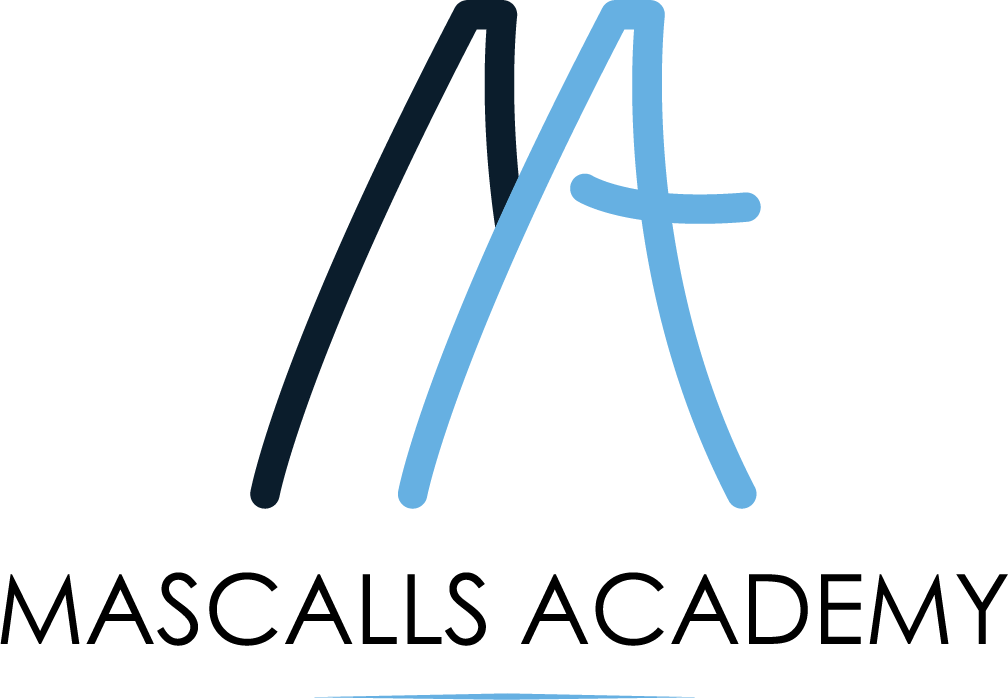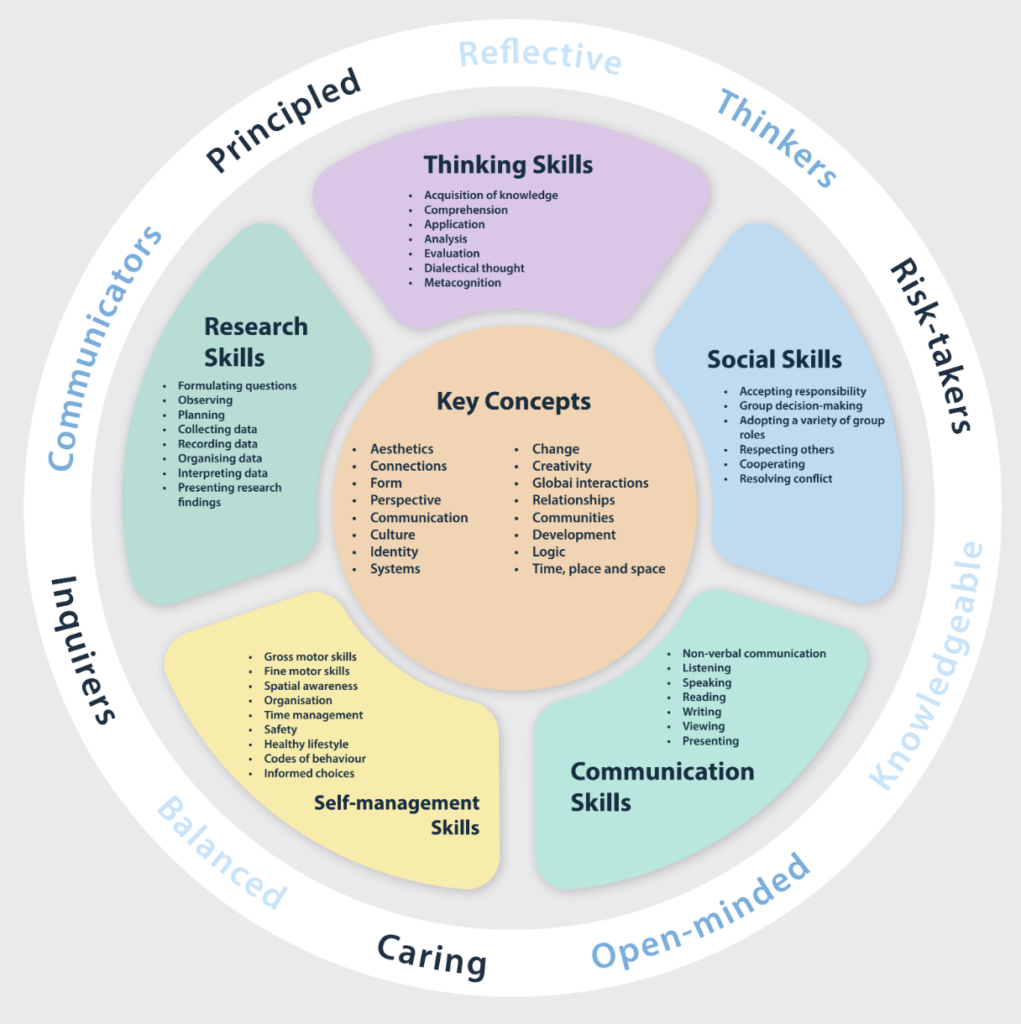What is an IB Education?
The aim of all IB programmes is to develop internationally minded people who, recognising their common humanity and shared guardianship of the planet, help to create a better and more peaceful world.
The IB Learner Profile
The International Baccalaureate® (IB) learner profile describes a broad range of human capacities and responsibilities that go beyond academic success. They imply a commitment to help all members of the school community learn to respect themselves, others and the world around them.
Each of the IB’s programmes is committed to the development of students according to the IB learner profile.
The profile aims to develop learners who are:

Inquirers

Knowledgeable

Thinkers

Communicators

Principled

Open-Minded

Caring

Risk-Takers

Balanced

Reflective
Citation: International Baccalaureate®, IB Organization. “What is an IB Education?” Published November 2019, on behalf of the International Baccalaureate Organization (IBO) – linked here.
The Middle Years Programme is a coherent and comprehensive curriculum framework that provides academic challenge and develops the life skills of students in Year 7, Year 8 and Year 9 at Mascalls Academy. It encourages students to make practical connections between their studies and the real world, preparing them for success in further study and in life.
What does the MYP offer our students?
The MYP aims to develop active learners and internationally minded young people who can empathise with others and pursue lives of purpose and meaning. The programme empowers students to inquire into a wide range of issues and ideas of significance locally, nationally and globally. The result is young people who are creative, critical and reflective thinkers.
Why do we follow the MYP at Mascalls Academy?
Research shows that students participating in the MYP:
- build confidence in managing their own learning
- learn by doing, connecting the classroom to the larger world
- outperform non-IB students in critical academic skills – click here to view the supporting research findings
- consistently have greater success in IB Diploma Programme examinations
- thrive in positive school cultures where they are engaged and motivated to excel – click here to view the supporting report
- develop an understanding of global challenges and a commitment to act as responsible citizens.
What are the contextual and conceptual ideas of the MYP?
The MYP values education that helps develop meaning in learning for the students. All Mascalls Academy students will be introduced to the following global contexts to anchor their learning across all subjects:
- Identities and relationships
- Orientation in space and time
- Personal and cultural expression
- Scientific and technical innovation
- Globalisation and sustainability
- Fairness and development
As well as this, all Mascalls Academy MYP students will be introduced to the 16 key concepts that the MYP identifies, throughout their time in Year 7, 8 and 9. This will be done through anchoring in subject disciplines.
- Aesthetics
- Connections
- Form
- Perspective
- Change
- Creativity
- Global interactions
- Relationships
- Communication
- Culture
- Identity
- Systems
- Communities
- Development
- Logic
- Time, place and space
Citation: International Baccalaureate®, IB Organization. “What is the MYP?” Published by the International Baccalaureate Organization (IBO) – linked here.
Approaches to Learning (ATLs) Skills
The IB focus on approaches to learning (ATL) is grounded in the belief that learning how to learn is fundamental to a student’s education.
The five categories of interrelated skills aim to empower Mascalls Academy MYP students to become self-regulated learners who know how to ask good questions, set effective goals, pursue their aspirations and have the determination to achieve them. These skills also help to support students’ sense of agency, encouraging them to see their learning as an active and dynamic process.
The five categories of ATLs are:
- thinking skills—including areas such as critical thinking, creative thinking and ethical thinking
- research skills—including skills such as comparing, contrasting, validating and prioritising information
- communication skills—including skills such as written and oral communication, effective listening,and formulating arguments
- social skills—including areas such as forming and maintaining positive relationships, listening skills, and conflict resolution
- self-management skills—including both organisational skills, such as managing time and tasks, and affective skills, such as managing state of mind and motivation.
Assessment in the MYP
How is your child assessed?
Each subject group within the MYP has 4 set assessment areas called criteria (A B C D) which are subject group specific. This helps students to develop the knowledge and skill they need to be successful in each subject group. These skills are often transferable to other subject groups and aspects of learning. Teachers will assess your child according to each of these criteria at least twice across each year.
The MYP assessment process is a criterion-related model. The strengths of this model are:
- Students know before even attempting the work what needs to be done to reach each level.
- It helps teachers to clarify and express their expectations about assignments in a way that students can understand.
- Students are assessed for what they can do, rather than being ranked against each other.
- Students receive feedback on their performance based on the criteria level descriptors.
View the criterion for each subject below.
Criteria A
Analysing
Criteria B
Organising
Criteria C
Producing text
Criteria D
Using language
Click on the link below to view the full description of the criterion for this subject, for a more detailed overview of what your child is currently achieving or working towards.
Criteria A
Listening
Criteria B
Reading
Criteria C
Speaking
Criteria D
Writing
Click on the link below to view the full description of the criterion for this subject, for a more detailed overview of what your child is currently achieving or working towards.
Criteria A
Knowing & understanding
Criteria B
Investigating
Criteria C
Communicating
Criteria D
Thinking critically
Click on the link below to view the full description of the criterion for this subject, for a more detailed overview of what your child is currently achieving or working towards.
Criteria A
Knowing & understanding
Criteria B
Inquiring & designing
Criteria C
Processing & evaluating
Criteria D
Reflecting on the impacts of science
Click on the link below to view the full description of the criterion for this subject, for a more detailed overview of what your child is currently achieving or working towards.
Criteria A
Inquiring & analysing
Criteria B
Developing ideas
Criteria C
Creating the solution
Criteria D
Evaluating
Click on the link below to view the full description of the criterion for this subject, for a more detailed overview of what your child is currently achieving or working towards.
Criteria A
Knowing & understanding
Criteria B
Investigating patterns
Criteria C
Communicating
Criteria D
Applying mathematics in real world contexts
Click on the link below to view the full description of the criterion for this subject, for a more detailed overview of what your child is currently achieving or working towards.
Criteria A
Knowing & understanding
Criteria B
Planning for performance
Criteria C
Applying & performing
Criteria D
Reflecting & improving performance
Click on the link below to view the full description of the criterion for this subject, for a more detailed overview of what your child is currently achieving or working towards.
Criteria A
Knowing & understanding
Criteria B
Developing skills
Criteria C
Thinking critically
Criteria D
Responding
Click on the link below to view the full description of the criterion for this subject, for a more detailed overview of what your child is currently achieving or working towards.
How to convert MYP criterion levels into a grade?
Teachers must gather sufficient evidence from a range of assessment tasks for each strand of each criterion to enable them to make a professional and informed judgement guided by the criteria to determine a student’s achievement level. Achievement levels for the four criteria (out of a maximum of 8 for each criterion assessed) are added together creating a total number out of 32. Using the table below, this is converted to an MYP Grade from 1-7 with 7 being the highest. This table describes in broad terms what a student can do at each level but this can only be used as a broad guide.
Sum of all assessed criteria (A, B, C, D, out of 8 each)
MYP grade
28 – 32
7
Description
Produces high-quality, frequently innovative work. Communicates comprehensive, nuanced understanding of concepts and contexts. Consistently demonstrates sophisticated critical and creative thinking. Frequently transfers knowledge and skills with independence and expertise in a variety of complex classroom and real-world situations.
Sum of all assessed criteria (A, B, C, D, out of 8 each)
MYP grade
24 – 27
6
Description
Produces high-quality, occasionally innovative work. Communicates extensive understanding of concepts and contexts. Demonstrates critical and creative thinking, frequently with sophistication. Uses knowledge and skills in familiar and unfamiliar classroom and real-world situations, often with independence.
Sum of all assessed criteria (A, B, C, D, out of 8 each)
MYP grade
19 – 23
5
Description
Produces generally high-quality work. Communicates secure understanding of concepts and contexts. Demonstrates critical and creative thinking, sometimes with sophistication. Uses knowledge and skills in familiar classroom and real-world situations, and, with support, some unfamiliar real-world situations.
Sum of all assessed criteria (A, B, C, D, out of 8 each)
MYP grade
15 – 18
4
Description
Produces good quality work. Communicates basic understanding of most concepts and contexts with few misunderstandings and minor gaps. Often demonstrates basic critical and creative thinking. Uses knowledge and skills with some flexibility in familiar classroom situations, but requires support in unfamiliar situations.
Sum of all assessed criteria (A, B, C, D, out of 8 each)
MYP grade
10 – 14
3
Description
Produces work of an acceptable quality. Communicates basic understanding of many concepts and contexts, with occasionally significant misunderstandings or gaps. Begins to demonstrate some basic critical and creative thinking. Is often inflexible in the use of knowledge and skills, requiring support even in familiar classroom situations.
Sum of all assessed criteria (A, B, C, D, out of 8 each)
MYP grade
6 – 9
2
Description
Produces work of limited quality. Expresses misunderstandings or significant gaps in understanding for many concepts and contexts. Infrequently demonstrates critical or creative thinking. Generally inflexible in the use of knowledge and skills, infrequently applying knowledge and skills.
Sum of all assessed criteria (A, B, C, D, out of 8 each)
MYP grade
1 – 5
1
Description
Produces work of very limited quality. Conveys many significant misunderstandings or lacks understanding of most concepts and skills. Very rarely demonstrates critical or creative thinking. Very inflexible, rarely using knowledge or skills.
The Community Project
Through the Middle Years Programme (MYP) projects, students experience the responsibility of completing a significant piece of work over an extended period of time. At Mascalls Academy, students in Year 9 get the opportunity to partake in the Community Project which combines the key element of service and action. The Community Project is all about the students taking the chance to become an agent of change, a young person who makes a difference and campaigns for change through one of the below types of service.
Direct Service
This is an interaction that involves people, the environment, or animals.
Indirect Service
You do not see the community you are serving, however you can verify that your actions will benefit the community and the environment.
Research Service
Collect information through varied sources analyse data and report on a topic of importance to influence policy or practice.
Advocacy Service
You speak on behalf of a cause or concern to promote action on an issue of public interest.
What will students learn through the MYP projects?
MYP projects involve students in a wide range of activities to extend their knowledge and understanding and to develop their skills and attitudes.
These student-planned learning activities include:
- deciding what they want to learn about, identifying what they already know, and discovering what they will need to know to complete the project
- creating proposals or criteria for their project, planning their time and materials, and recording developments of the project
- making decisions, developing understanding and solving problems, communicating with their supervisor and others, and creating a product or developing an outcome evaluating the product/outcome and reflecting on their project and their learning.
As students become involved in the self-initiated and self-directed learning process, they will find it easier to construct in-depth knowledge on their topic, and develop an understanding of themselves as learners.
Citation: International Baccalaureate®, IB Organization. “MYP Projects” Published by the International Baccalaureate Organization (IBO) – linked here.



